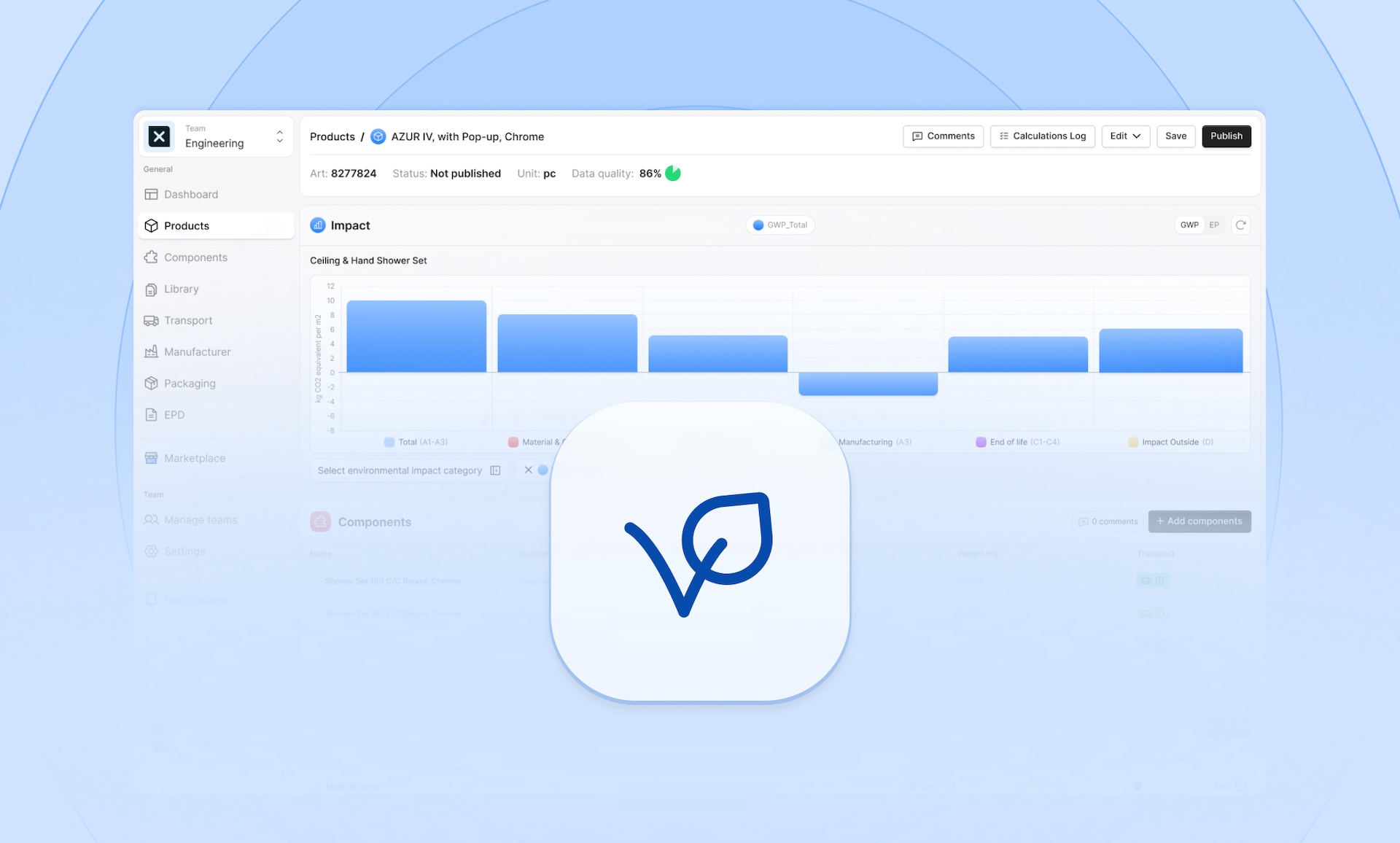What Is Sustainability Software?
Sustainability software is a digital solution that helps organisations plan, manage, measure and report their environmental, social and governance (ESG) performance.
Sustainability software solutions streamline the collection of sustainability data, enable automated reporting for frameworks like the Corporate Sustainability Reporting Directive (CSRD), the Global Reporting Initiative (GRI), and the Carbon Disclosure Project (CDP), and support strategic climate action across operations and the supply chain.
Key Features of Sustainability Software
While features vary by platform, most sustainability software includes capabilities such as:
- Data Collection and Integration: Automate ESG data gathering from internal systems (ERP, PLM, procurement tools) and external sources (suppliers, partners, databases).
- GHG Emissions Calculations: Calculate emissions across Scope 1, 2 and 3, aligned with the GHG Protocol.
- Sustainability Reporting: Generate reports for CSRD, GRI, CDP and other standards with traceable, auditable data.
- Performance Dashboards: Track sustainability KPIs, visualise progress and identify emission hotspots.
- Scenario Analysis: Model the impact of material choices, process changes or supplier shifts.
- Regulatory Alignment: Ensure compliance with EU taxonomy, EPR, ISO 14001, SEC disclosures and more.
- Stakeholder Engagement: Share reports and data with customers, investors, employees and regulators in a transparent format.
Why Use Sustainability Software?
The shift toward transparency and regulation, especially under the Corporate Sustainability Reporting Directive (CSRD), is driving demand for software that goes far beyond spreadsheets. Benefits include:
- Save time by automating manual data entry and formatting
- Ensure compliance with fast-evolving sustainability regulations
- Improve traceability of emissions across the entire value chain
- Unify financial and environmental reporting through integrated platforms
- Support double materiality assessments by mapping both financial and ESG risks
- Strengthen stakeholder trust with verifiable, high-quality disclosures
- Make better decisions using real-time data, scenario tools and lifecycle thinking
Sustainability Software and Product-Level Action
While many platforms focus on company-wide ESG data, leading sustainability software – like EandoX – goes deeper. It enables product-level analysis with tools like:
- Product carbon footprint (PCF) calculation
- Automated EPD generation
- Scope 3 emissions tracking
- Material and supplier data integration
- Sustainability by design modelling
This product-level granularity supports both strategic planning and tactical decision-making, whether you're improving a product’s climate impact or selecting more sustainable inputs.
Which Industries Use Sustainability Software?
Sustainability software is used across industries, including:
- Manufacturing: Optimise supply chains, track embedded carbon, publish EPDs
- Construction: Meet green building criteria, streamline public procurement eligibility
- Retail and Fashion: Assess material footprint, track supplier impact, meet consumer demands
- Food and Beverage: Measure emissions from ingredients, packaging, transport and waste
- Logistics and Transportation: Analyse route emissions, fuel usage and delivery options
Whether the goal is net zero, regulatory compliance or stronger brand positioning, digital sustainability tools are a key enabler.
EandoX – The Sustainability Software Built for Product Transparency
EandoX is a purpose-built sustainability software platform focused on environmental product performance, EPP. It goes beyond traditional ESG dashboards by offering:
- Product carbon footprint (PCF) tools with support for EN 15804 and ISO 14067
- EPD generators that scale across product variants
- Data integration with ERP, supplier platforms and LCI databases
- Support for sustainable product design through scenario analysis
Explore how EandoX works or book a demo
FAQ: Sustainability Software
What is sustainability software?
A sustainability software is a digital platform for managing ESG performance, calculating GHG emissions and producing regulatory-aligned reports.
How does it help with CSRD compliance?
Sustainability software automates data collection, supports double materiality assessments and generates reports aligned with CSRD requirements.
Can sustainability software solutions track Scope 3 emissions?
Yes. Advanced software like EandoX provide tools for Scope 3 modelling, including supplier data integration and value chain analysis.
What’s the difference between ESG software and sustainability software?
ESG software often focuses on investor reporting. Sustainability software typically offers broader functionality, including carbon footprinting and regulatory compliance tools.
Does EandoX integrate with existing systems?
Yes. EandoX supports integration with ERP systems, LCI databases, supplier data feeds and EPD platforms for seamless workflows.
What regulations does sustainability software support?
Common frameworks include CSRD, GRI, CDP, EU taxonomy, ISO 14001, and SEC disclosure requirements.
Can I use EandoX for product sustainability?
Absolutely. EandoX focuses on product-level emissions, environmental product declarations (EPDs), and lifecycle insights to support sustainable product development.




